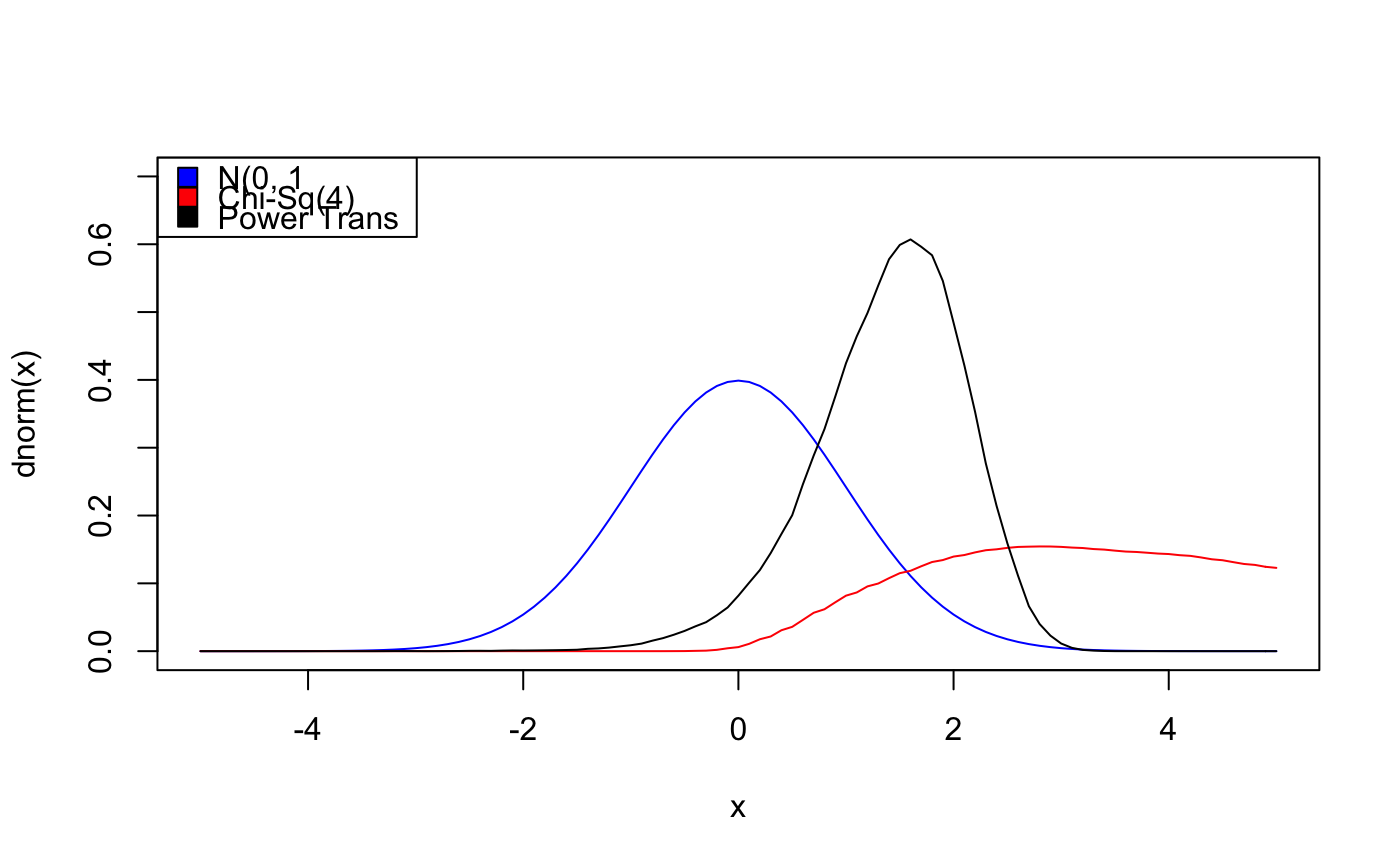Generalized Box-Cox transformation.
powTrans(x, lambda = 0, alpha = 0, normalize = FALSE, jacobian = FALSE)
Arguments
| x | Vector of quantiles at which to compute the transformation. |
|---|---|
| lambda | Exponent of the transformation. See Details. |
| alpha | Offset of the transformation. See Details. |
| normalize | Logical; if |
| jacobian | Logical; if |
Value
The vector z of transformed values, and optionally the Jacobian of the inverse transformation. See Details.
Details
The Generalized Power or Box-Cox transformation is $$ z = \begin{array}{rl} ((x + \alpha)^\lambda - 1) / (\lambda C^{\lambda-1}) & \lambda \neq 0 \\ C \log(x + \alpha) & \lambda = 0, \end{array} $$
where \(C\) is the Geometric mean, i.e., C = exp(mean(log(x + alpha))). Note that C is only calculated if normalize = TRUE.
Examples
# generate data and plot # apply power transform and superimpose on plot # finally, superimpose N(0, 1) on plot n <- 1e5 df <- 5 X <- rchisq(n, df = df) xdens <- kernelXD(X) xdens.trans <- kernelXD(powTrans(X)) # plots curve(dnorm(x), col = "blue", xlim=c(-5, 5), ylim = c(0,0.7)) # true PDFlegend("topleft", c("N(0, 1", "Chi-Sq(4)", "Power Trans"), pch = c(22,22,22,NA), pt.cex = 1.5, pt.bg = c("blue", "red", "black"))
